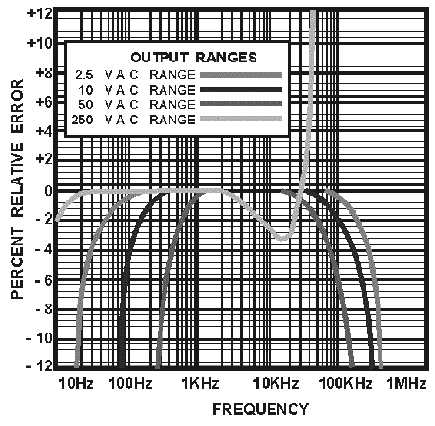1-7
AC VOLTAGE MEASUREMENTS
When ac voltage measurements are performed, the input impedance of the selected test equipment
determines the amount of energy removed from the circuit under test. If an ac meter is placed across a
high-impedance circuit, the meter may load the high-impedance circuit and disturb circuit conditions,
possibly to the point of causing the circuit to cease functioning. A dc electronic voltmeter, used in
conjunction with a rectifying probe, extracts only a small amount of energy from the circuit under test.
Another advantage of an electronic voltmeter over the analog voltmeter is that voltages of low values can
be accurately measured.
If the circuit being measured is a relatively high-frequency circuit, the internal capacitance of an
analog voltmeter rectifier could produce a disturbance by detuning the circuit. Figure 1-6 depicts the
frequency response of a Simpson 260. Note the percent of error introduced at different frequencies. For
high-frequency voltage measurements, an electronic voltmeter or an oscilloscope should be used. The
sensitivity of the meter (or oscilloscope) determines the lowest voltage it can measure accurately, and the
shunt capacitance of its input determines the upper frequency limits. It should be clear that the frequency
response of a piece of test equipment is just as important as its range limitations. If you exceed the range
limitations of a meter, it will either "peg" the meter or belch out the smell of smoke that many of us are
intimately acquainted with. This, however, is not the case when you exceed the frequency limitations of
your test equipment. Your test equipment will normally show a response, but that response will be grossly
inaccurate. The lesson to be learned here is that you should be fully aware of the limitations of your test
equipment and adhere to them.
Figure 1-6.—Simpson 260 frequency response for ac voltage ranges.

